Using Edge-Side Includes with Workers for High Availability


Last week, we wrote about implementing ESI with Cloudflare Workers. This is a guest post by Lukas Reider on how to use ESI not only for better performance, but to optimize availability while migrating backends.
In this post, you will learn about how my client Titel Media was able to use Cloudflare Workers to implement simple edge side includes.
The idea is to partially replace the parts of the online magazine highsnobiety.com with a new, and much more refined frontend implementation. In this article, you will get to know the use case, and how I found a powerful application for Cloudflare Workers.
Backstory
My current project, highsnobiety.com is in the process of replacing Wordpress with a dedicated content pipeline and a custom frontend. It is a huge magazine, with tons of contents, hundreds of daily updates and an international team of more than 60 editors, researching and writing exciting stories.
The company behind it, Titel Media GmbH, a publishing house with offices in Berlin, and New York, surely has grown out of Wordpress for hosting their content.
The show must go on
One does not simply rewrite a sophisticated web publishing pipeline like WordPress. Nor does one, simply Continue reading
Using Workers To Make Static Sites Dynamic

The following is a guest post by Paddy Sherry, Lead Developer at Gambling.com Group. They build performance marketing websites and tools, using Cloudflare to serve to their global audience. Paddy is a Web Performance enthusiast with an interest in Serverless Computing.
Choosing technology that is used on a large network of sites is a key architectural decision that must be correct. We build static websites but needed to find a way to make them dynamic to do things like geo targeting, restrict access and A/B testing. This post shares our experiences on what we learned when using Workers to tackle these challenges.
Our Background
At Gambling.com Group, we use Cloudflare on all of our sites so our curiosity level in Workers was higher than most. We are big fans of static websites because nothing is faster than flat HTML. We had been searching for a technology like this for some time and applied to be part of the beta program, so were one of the first to gain access to the functionality.
The reason we were so keen to experiment with Workers is that for anyone running static sites, 99% of the time, the product requirements Continue reading
Introducing ebpf_exporter
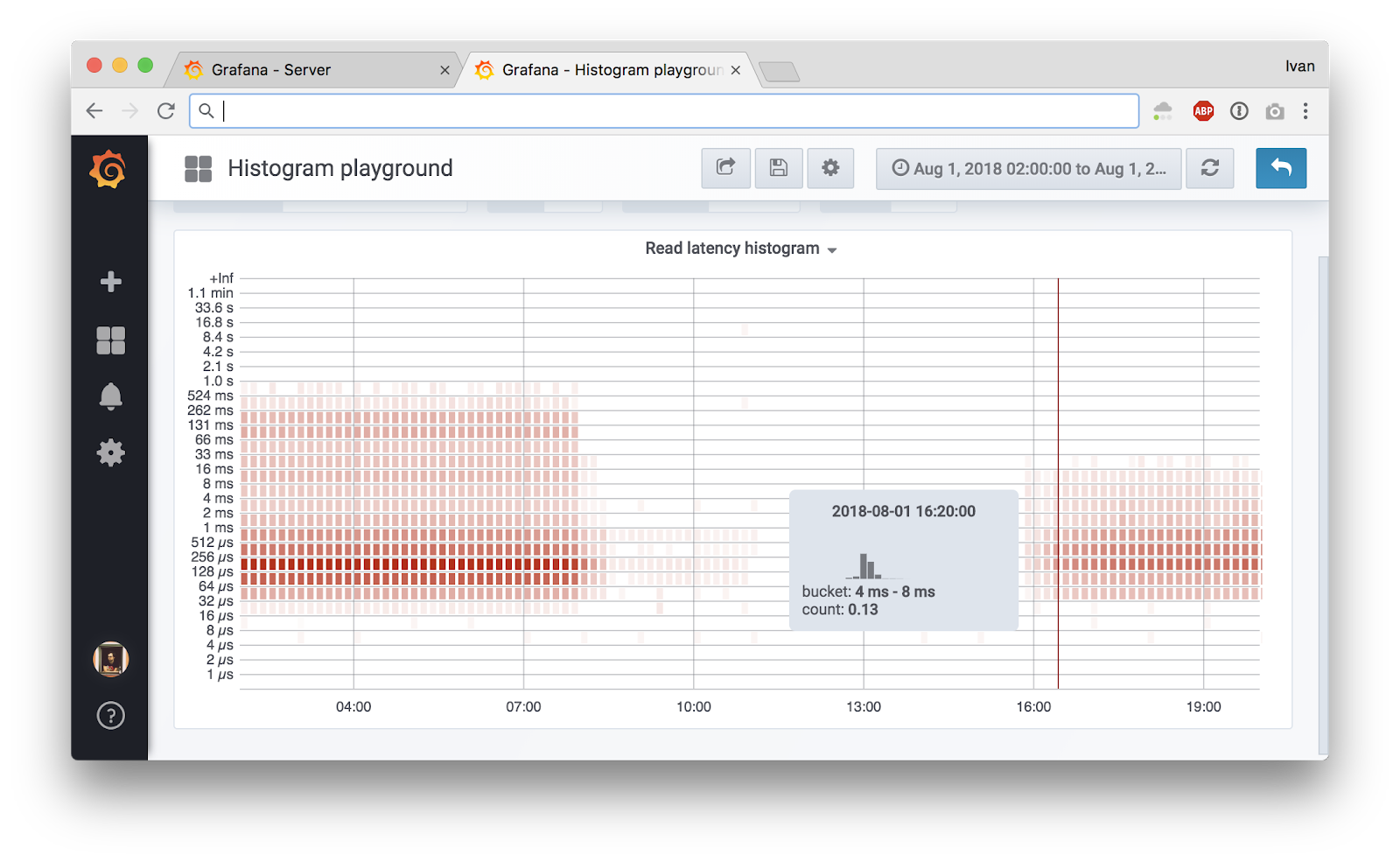
This is an adapted transcript of a talk I gave at Promcon 2018. You can find slides with additional information on our Prometheus deployment and presenter notes here. There's also a video.
Tip: you can click on the image to see the original large version.
Here at Cloudflare we use Prometheus to collect operational metrics. We run it on hundreds of servers and ingest millions of metrics per second to get insight into our network and provide the best possible service to our customers.
Prometheus metric format is popular enough, it's now being standardized as OpenMetrics under Cloud Native Computing Foundation. It's exciting to see convergence in long fragmented metrics landscape.
In this blog post we'll talk about how we measure low level metrics and share a tool that can help you to get similar understanding of your systems.
There are two main exporters one can use to get some insight into a Linux system performance.
The first one is node_exporter that gives you information about basics like CPU usage breakdown by type, memory usage, disk IO stats, filesystem and network usage.
The second one is cAdvisor, that gives similar metrics, but drills down to a container level. Instead Continue reading
Refresh Stale DNS Records on 1.1.1.1

You can now refresh 1.1.1.1’s DNS cache for domain names by using the purge cache tool. This is useful for domain owners who have updated their DNS records and want to make sure it is reflected for people who are using 1.1.1.1 as their public DNS resolver.

When a client queries for a domain against 1.1.1.1, the resolver returns the IP address from its cache. The cache TTL for a DNS entry is 3 hours. If the host specifies a cache TTL that is shorter than 3 hours, the resolver respects that. This means, when a domain owner changes the DNS host from one to another, in the worst case, she will have to wait for at least 3 hours before the old IP address expires from 1.1.1.1’s cache. With the help of the purge cache tool, a domain owner can now easily refresh 1.1.1.1’s DNS cache and will not have to wait for the cached entry to expire.

To purge a DNS record, you enter the name of your domain, pick the DNS record type and hit the ‘Purge Cache’ button.

You can Continue reading
Internet Native Applications

I grew up with DOS and Windows 3.1. I remember applications being fast - instant feedback or close to it. Today, native applications like Outlook or Apple Mail still feel fast - click compose and the window is there instantly and it feels snappy. Internet applications do not.
My first Internet experience was paying $30 for a prepaid card with 10 hour access over a 14.4k modem. First, it was bulletin boards and later IRC and the WWW. From my small seaside town in Australia, the Internet was a window into the wider world, but it was slooooooow. In a way, it didn’t matter. The world of opportunities the Internet opened up, from information to music, to socializing and ecommerce, who cared if it was slow? The utility of the Internet and Internet applications meant I would use them regardless of the experience.
Performance improved from the 90s, but in 2008 when I switched from Outlook downloading my Yahoo! email over IMAP to Gmail in the browser, it wasn’t because it was faster - it wasn’t - it was because features like search, backed up mail, and unlimited storage were too good to resist. The cloud computing power Continue reading
Integrating redirection.io with Cloudflare Workers

The following is a guest post by Xavier Lacot, a developer at redirection.io and founder at JoliCode. He works primarily on Web and mobile projects as a consultant, trainer and technical expert.
What is redirection.io
Redirection.io is a Web traffic redirection manager. It provides a collection of tools for website administrators, SEO agencies, and developers, which help analyze HTTP errors, setup HTTP redirections, customize HTTP responses, and monitor the traffic efficiently.
The main part of a traditional redirection.io setup is the proxy, a software component which parses every request to check if a redirection or another response override is required. This "proxy" can be of several types - we provide libraries in several languages - but this setup can be simplified for Cloudflare clients by taking advantage of Cloudflare Workers.
Here come Cloudflare Workers
Earlier this year, Cloudflare unveiled its Workers product, a smart way of running code on the edge of Cloudflare locations. This computing feature is particularly interesting, as it allows performing several traffic operations without requiring any change on your own platform, code, or infrastructure: just enable Workers, write some code, and let Cloudflare handle the magic ✨
In practical terms, Workers Continue reading
How Cloudflare protects customers from cache poisoning
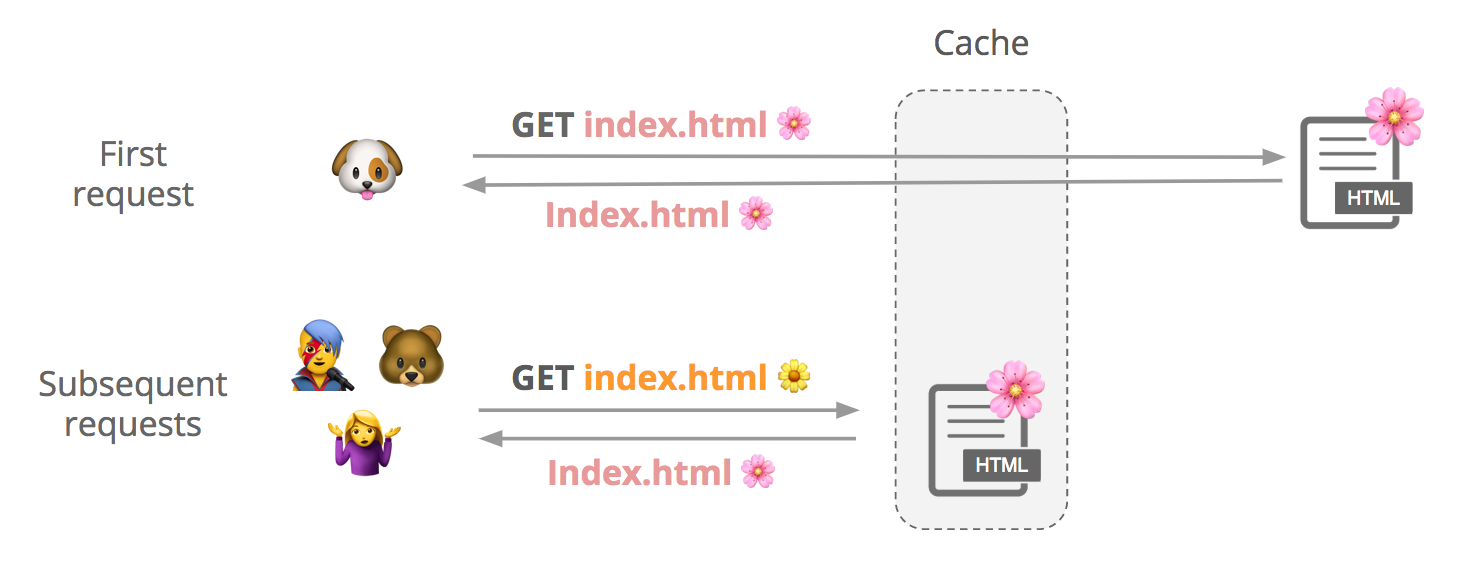
A few days ago, Cloudflare — along with the rest of the world — learned of a "practical" cache poisoning attack. In this post I’ll walk through the attack and explain how Cloudflare mitigated it for our customers. While any web cache is vulnerable to this attack, Cloudflare is uniquely able to take proactive steps to defend millions of customers.
In addition to the steps we’ve taken, we strongly recommend that customers update their origin web servers to mitigate vulnerabilities. Some popular vendors have applied patches that can be installed right away, including Drupal, Symfony, and Zend.
How a shared web cache works
Say a user requests a cacheable file, index.html. We first check if it’s in cache, and if it’s not not, we fetch it from the origin and store it. Subsequent users can request that file from our cache until it expires or gets evicted.
Although contents of a response can vary slightly between requests, customers may want to cache a single version of the file to improve performance:

(See this support page for more info about how to cache HTML with Cloudflare.)
How do we know it’s the same file? We create something Continue reading
Edge-Side-Includes with Cloudflare Workers
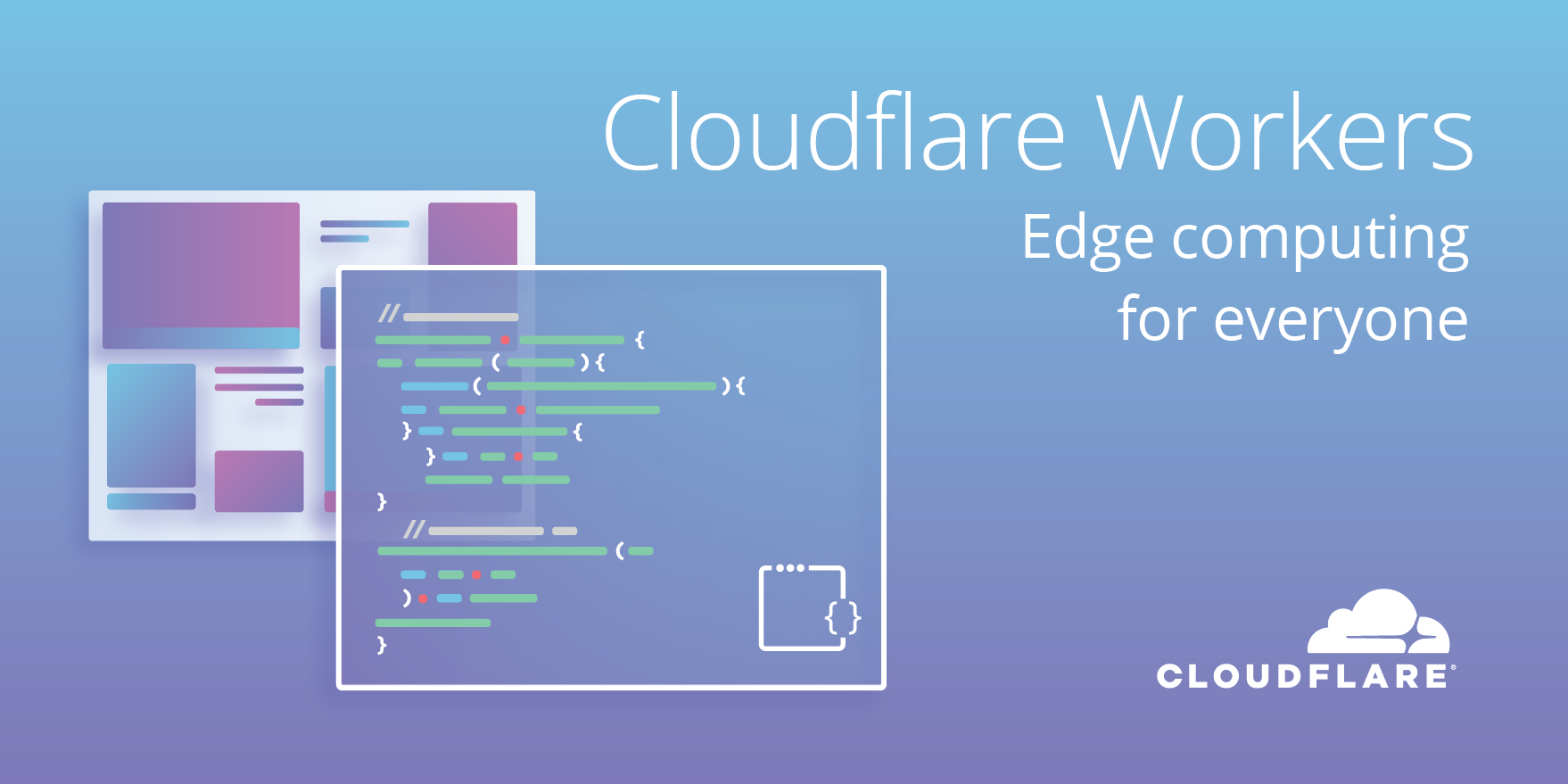
At Cloudflare we’re accelerating web assets in a number of different ways. Part of this is caching, by storing the response given by the origin server directly within our 151+ global data centers. This will dramatically improve the delivery of the resources as the visitor will directly get them from the data center closest to them, instead of waiting for us to fetch the request from the origin web server.
The issue with dynamic (but not a lot) pages
The subject we’re gonna cover today is the concept of Edge-Side-Includes. And what’s better than a real use-case to introduce what it is used for? Let’s take a website where all pages are including advertisements at the head and bottom. Could we consider these pages static? We couldn’t as at least part of this page is dynamic. Could we consider caching it? That’s a no again as it would mean the first dynamic part rendered will be cached and served for the other visitors trying to get the page. It would be a catastrophe if the advertisements are user-specific.
So the issue here is that we can’t cache the page. That’s quite a shame as it means that we’ll fetch Continue reading
African traffic growth and predictions for the future

Looking back at our historical data, we realized how much the Internet and Cloudflare grew. With more than 150 datacenters, 10 percent of web-based applications, customers everywhere around the world, from the tiny islands in the Pacific to the big metropolises, we have an Internet landscape of almost every country and continent.
Cloudflare’s mission is to help build a better Internet. To do that we operate datacenters across the globe. By having datacenters close to end user we provide a fast, secure experience for everyone. Today I’d like to talk about our datacenters in Africa and our plans to serve a population of 1.2 billion people over 58 countries.
Internet penetration in developed countries skyrocketed since the 2000s, Internet usage is growing rapidly across Africa. We are seeing a 4% to 7% increase in traffic month on month. As of July 2018, we have 8 datacenters on the African Continent:
Enable Private DNS with 1.1.1.1 on Android 9 Pie


Recently, Google officially launched Android 9 Pie, which includes a slew of new features around digital well-being, security, and privacy. If you’ve poked around the network settings on your phone while on the beta or after updating, you may have noticed a new Private DNS Mode now supported by Android.
This new feature simplifies the process of configuring a custom secure DNS resolver on Android, meaning parties between your device and the websites you visit won’t be able to snoop on your DNS queries because they’ll be encrypted. The protocol behind this, TLS, is also responsible for the green lock icon you see in your address bar when visiting websites over HTTPS. The same technology is useful for encrypting DNS queries, ensuring they cannot be tampered with and are unintelligible to ISPs, mobile carriers, and any others in the network path between you and your DNS resolver. These new security protocols are called DNS over HTTPS, and DNS over TLS.
Configuring 1.1.1.1
Android Pie only supports DNS over TLS. To enable this on your device:
- Go to Settings → Network & internet → Advanced → Private DNS.
- Select the Private DNS provider hostname option.
- Enter
Continue reading
Three new ways teams are using Cloudflare Access
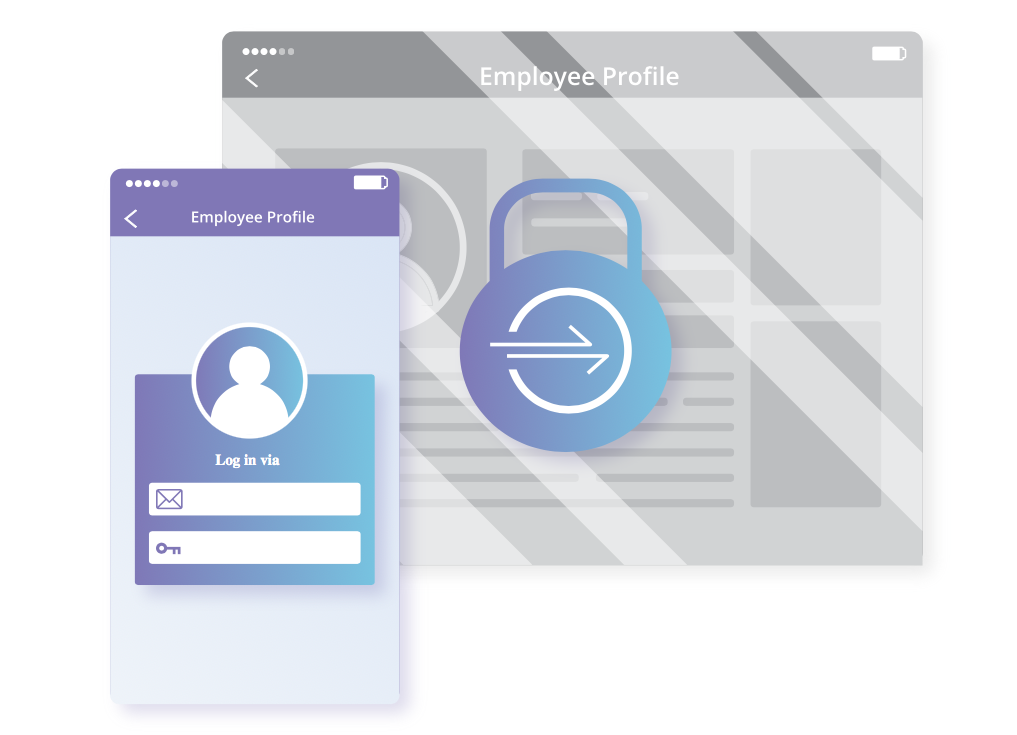
Since leaving beta three weeks ago, Cloudflare Access has become our fastest-growing subscription service. Every day, more teams are using Access to leave their VPN behind and connect to applications quickly and securely from anywhere in the world.
We’ve heard from a number of teams about how they’re using Access. Each team has unique needs to consider as they move away from a VPN and to a zero trust model. In a zero trust framework, each request has to prove that a given application should trust its attempt to reach a secure tool. In this post, we’re highlighting some of the solutions that groups are using to transition to Cloudflare Access.
Solution 1: Collaborate with External Partners
Cloudflare Access integrates with popular identity providers (IdPs) so that your team can reach internal applications without adding more credentials. However, teams rarely work in isolation. They frequently rely on external partners who also need to reach shared tools.
How to grant and manage permissions with external partners poses a security risk. Just because you are working with a third-party doesn’t mean they should have credentials to your IdP. They typically need access to a handful of tools, not all of your internal Continue reading
A Detailed Look at RFC 8446 (a.k.a. TLS 1.3)

For the last five years, the Internet Engineering Task Force (IETF), the standards body that defines internet protocols, has been working on standardizing the latest version of one of its most important security protocols: Transport Layer Security (TLS). TLS is used to secure the web (and much more!), providing encryption and ensuring the authenticity of every HTTPS website and API. The latest version of TLS, TLS 1.3 (RFC 8446) was published today. It is the first major overhaul of the protocol, bringing significant security and performance improvements. This article provides a deep dive into the changes introduced in TLS 1.3 and its impact on the future of internet security.
An evolution
One major way Cloudflare provides security is by supporting HTTPS for websites and web services such as APIs. With HTTPS (the “S” stands for secure) the communication between your browser and the server travels over an encrypted and authenticated channel. Serving your content over HTTPS instead of HTTP provides confidence to the visitor that the content they see is presented by the legitimate content owner and that the communication is safe from eavesdropping. This is a big deal in a world where online privacy Continue reading
Optimising Caching on Pwned Passwords (with Workers)
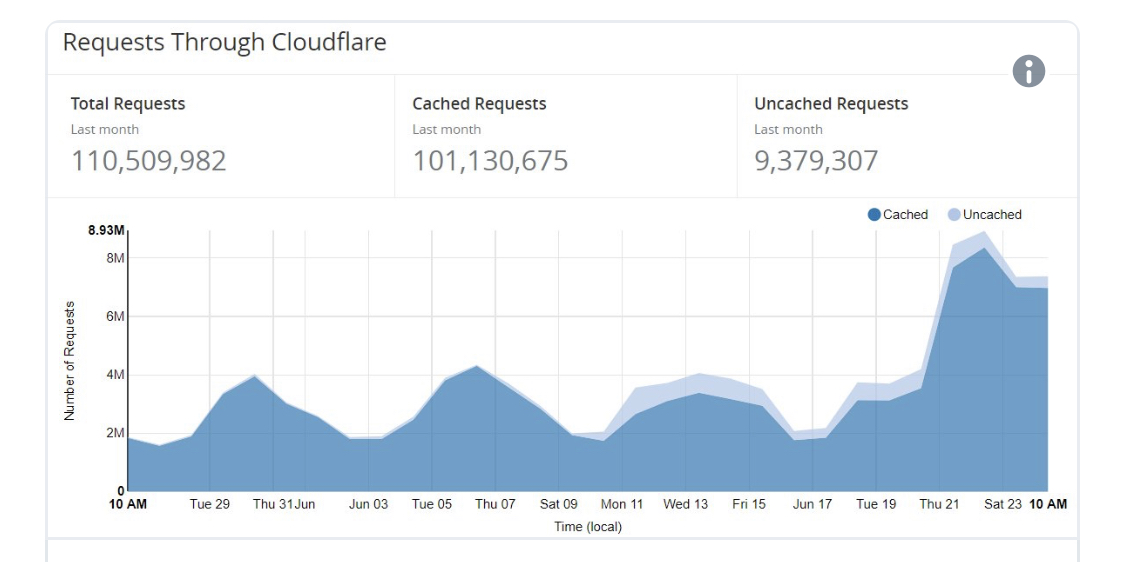
In February, Troy Hunt unveiled Pwned Passwords v2. Containing over half a billion real world leaked passwords, this database provides a vital tool for correcting the course of how the industry combats modern threats against password security.
In supporting this project; I built a k-Anonymity model to add a layer of security to performed queries. This model allows for enhanced caching by mapping multiple leaked password hashes to a single hash prefix and additionally being performed in a deterministic HTTP-friendly way (which allows caching whereas other implementations of Private Set Intersection require a degree of randomness).
Since launch, PwnedPasswords, using this anonymity model and delivered by Cloudflare, has been implemented in a widespread way across a wide variety of platforms - from site like EVE Online and Kogan to tools like 1Password and Okta's PassProtect. The anonymity model is also used by Firefox Monitor when checking if an email is in a data breach.
Since it has been adopted, Troy has tweeted out about the high cache hit ratio; and people have been asking me about my "secret ways" of gaining such a high cache hit ratio. Over time I touched various pieces of Cloudflare's caching systems; in late 2016 Continue reading
Use Cloudflare Stream to build secure, reliable video apps
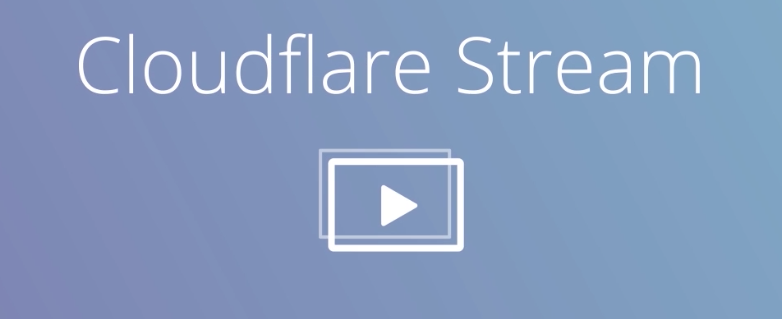
It’s our pleasure to announce the general availability of Cloudflare Stream. Cloudflare Stream is the best way for any founder or developer to deliver an extraordinary video experience to their viewers while cutting development time and costs, and as of today it is available to every Cloudflare customer.
If I had to summarize what we’ve learned as we’ve built Stream it would be: Video streaming is hard, but building a successful video streaming business is even harder. This is why our goal has been to take away the complexity of encoding, storage, and smooth delivery so you can focus on all the other critical parts of your business.
Cloudflare Stream API
You call a single endpoint, Cloudflare Stream delivers a high-quality streaming experience to your visitors. Here’s how it works:
- Your app calls the /stream endpoint to upload a video. You can submit the contents of the video with the request or you can provide a URL to a video hosted elsewhere.
- Cloudflare Stream encodes the stream in multiple resolutions to enable multi-bitrate streaming. We also automatically prepare DASH and HLS manifest files.
- Cloudflare serves your video (in multiple resolutions) from our vast network of 150+ data centers around the Continue reading
Additional Record Types Available with Cloudflare DNS

Photo by Mink Mingle / Unsplash
Cloudflare recently updated the authoritative DNS service to support nine new record types. Since these records are less commonly used than what we previously supported, we thought it would be a good idea to do a brief explanation of each record type and how it is used.
DNSKEY and DS
DNSKEY and DS work together to allow you to enable DNSSEC on a child zone (subdomain) that you have delegated to another Nameserver. DS is useful if you are delegating DNS (through an NS record) for a child to a separate system and want to keep using DNSSEC for that child zone; without a DS entry in the parent, the child data will not be validated. We’ve blogged about the details of Cloudflare’s DNSSEC implementation and why it is important in the past, and this new feature allows for more flexible adoption for customers who need to delegate subdomains.
Certificate Related Record Types
Today, there is no way to restrict which TLS (SSL) certificates are trusted to be served for a host. For example if an attacker were able to maliciously generate an SSL certificate for a host, they could use a man-in-the-middle attack Continue reading
Growing the Cloudflare Apps Ecosystem

Starting today we are announcing the availability of two key pilot programs:
Why now? Over the course of past few months we've seen accelerating interest in Workers, and we frequently field the question on what we are doing to combine our growing ecosystem around Workers, and our unique deliverability capability, Cloudflare Apps. To meet this need, we have introduced two programs, Apps with Workers and Workers Service Providers. Let’s dig into the details:
First, we are announcing the upcoming availability of Cloudflare Apps, powered by embeddable Workers. This will allow any developer to build, deploy and in the near future package Workers to distribute to third parties, all using the Cloudflare Apps platform. It will be, in effect, the world's first serverless Apps platform.
Today, it's easy develop Workers using with our UI or API. The ability to App-ify Workers opens up a whole new promise to those who prefer to deal in clicks and not code. For our Apps developers, Apps with Workers allows for more complex Apps offerings running on Cloudflare, and for our customers the next generation in Apps. So, while we are actively putting the finishing touches on Continue reading
How we scaled nginx and saved the world 54 years every day
The @Cloudflare team just pushed a change that improves our network's performance significantly, especially for particularly slow outlier requests. How much faster? We estimate we're saving the Internet ~54 years *per day* of time we'd all otherwise be waiting for sites to load.
— Matthew Prince (@eastdakota) June 28, 2018
10 million websites, apps and APIs use Cloudflare to give their users a speed boost. At peak we serve more than 10 million requests a second across our 151 data centers. Over the years we’ve made many modifications to our version of NGINX to handle our growth. This is blog post is about one of them.
How NGINX works
NGINX is one of the programs that popularized using event loops to solve the C10K problem. Every time a network event comes in (a new connection, a request, or a notification that we can send more data, etc.) NGINX wakes up, handles the event, and then goes back to do whatever it needs to do (which may be handling other events). When an event arrives, data associated with the event is already ready, which allows NGINX to efficiently handle many requests simultaneously without waiting.
num_events = epoll_wait(epfd, /*returned=*/events, events_len, /*timeout=*/-1);
Continue readingMinecraft API with Workers + Coffeescript

The following is a guest post by Ashcon Partovi, a computer science and business undergraduate at the University of British Columbia in Vancouver, Canada. He's the founder of a popular Minecraft multiplayer server, stratus.network, that provides competitive, team-based gameplay to thousands of players every week

If you've ever played a video game in the past couple of years, chances are you know about Minecraft. You might be familiar with the game or even planted a tree or two, but what you might not know about is the vast number of Minecraft online communities. In this post, I'm going to describe how I used Cloudflare Workers to deploy and scale a production-grade API that solves a big problem for these Minecraft websites.
Introducing the Problem
Here is an example of my Minecraft player profile from one of the many multiplayer websites. It shows some identity information such as my username, a bitmap of my avatar, and a preview of my friends. Although rendering this page with 49 bitmap avatars may seem like an easy task, it's far from trivial. In fact, it's unnecessarily complicated.

Here is the current workflow to render a player profile on a website given Continue reading
Q2 FY 18 Product Releases, for a better Internet “end-to-end”

Photo by Liu Zai Hou / Unsplash
In Q2, Cloudflare released several products which enable a better Internet “end-to-end” — from the mobile client to host infrastructure. Now, anyone from an individual developer to large companies and governments, can control, secure, and accelerate their applications from the “perimeter” back to the “host.”
On the client side, Cloudflare’s Mobile SDK extends control directly into your mobile apps, providing visibility into application performance and load times across any global carrier network.
On the host side, Cloudflare Workers lets companies move workloads from their host to the Cloudflare Network, reducing infrastructure costs and speeding up the user experience. Argo Tunnel lets you securely connect your host directly to a Cloudflare data center. If your host infrastructure is running other TCP services besides HTTP(S), you can now protect it with Cloudflare’s DDoS protection using Spectrum.
So for end-to-end control that is easy and fast to deploy, these recent products are all incredible “workers” across the “spectrum” of your needs.
But there’s more to the story
End users want richer experiences, such as more video, interactivity, and images. Meeting those needs can incur real costs in bandwidth, hardware, and time. Cloudflare addresses these with Continue reading
The Road to QUIC
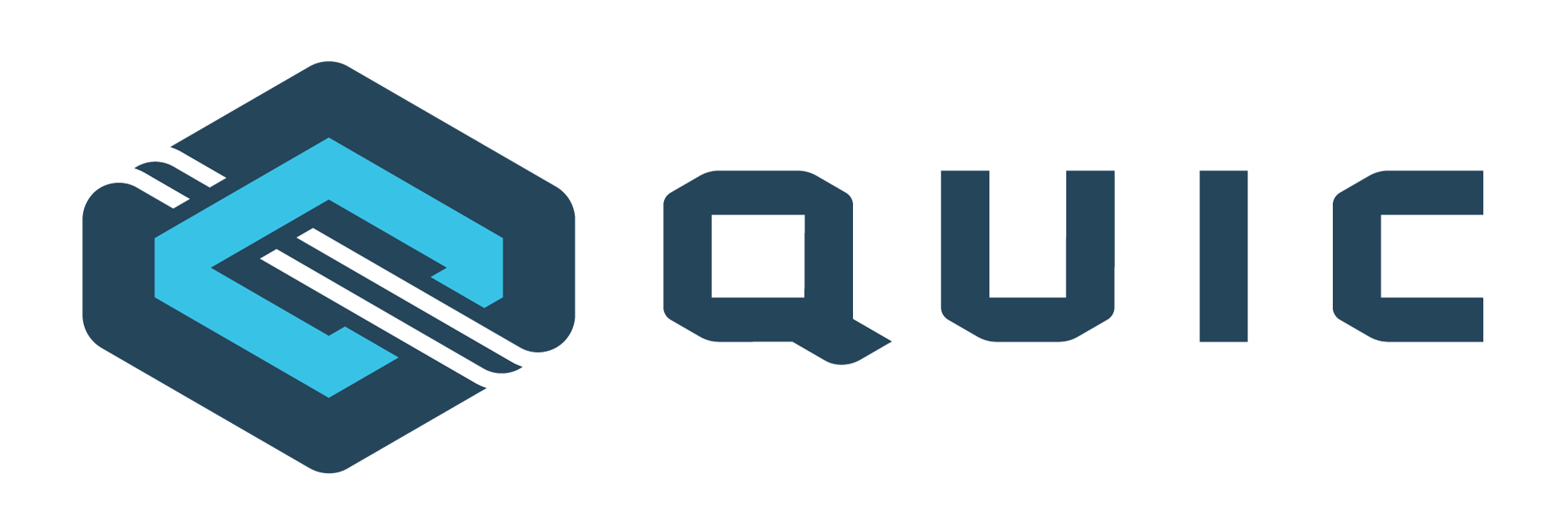
QUIC (Quick UDP Internet Connections) is a new encrypted-by-default Internet transport protocol, that provides a number of improvements designed to accelerate HTTP traffic as well as make it more secure, with the intended goal of eventually replacing TCP and TLS on the web. In this blog post we are going to outline some of the key features of QUIC and how they benefit the web, and also some of the challenges of supporting this radical new protocol.

There are in fact two protocols that share the same name: “Google QUIC” (“gQUIC” for short), is the original protocol that was designed by Google engineers several years ago, which, after years of experimentation, has now been adopted by the IETF (Internet Engineering Task Force) for standardization.
“IETF QUIC” (just “QUIC” from now on) has already diverged from gQUIC quite significantly such that it can be considered a separate protocol. From the wire format of the packets, to the handshake and the mapping of HTTP, QUIC has improved the original gQUIC design thanks to open collaboration from many organizations and individuals, with the shared goal of making the Internet faster and more secure.
So, what are the improvements QUIC provides?




